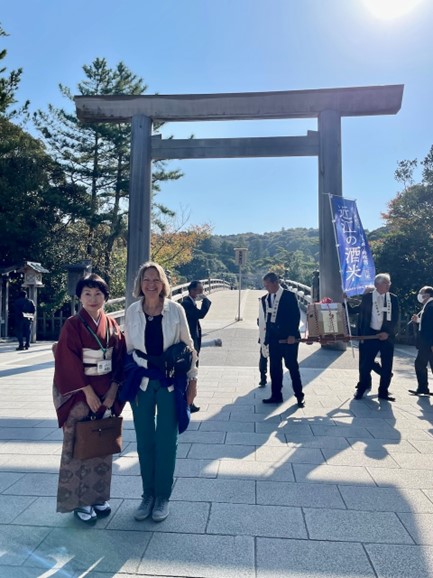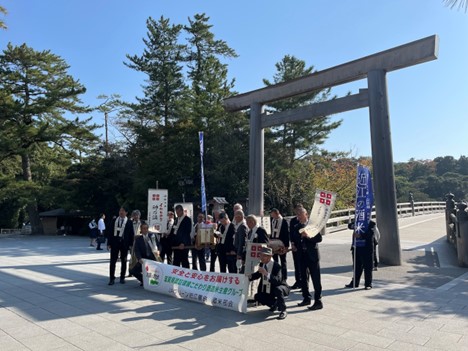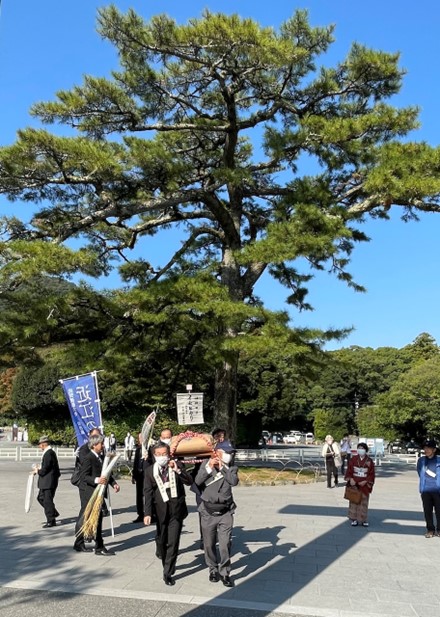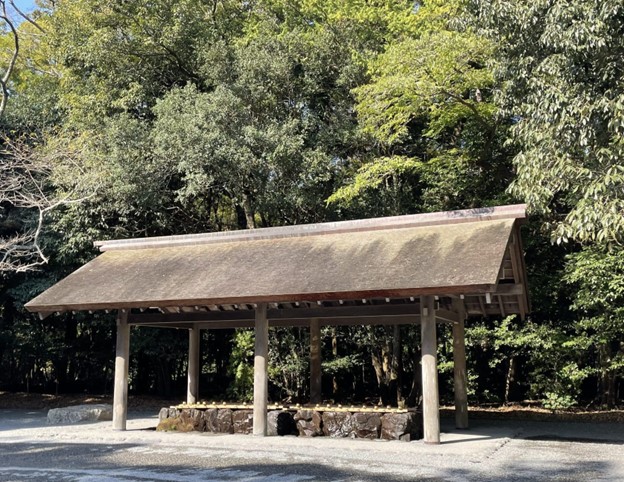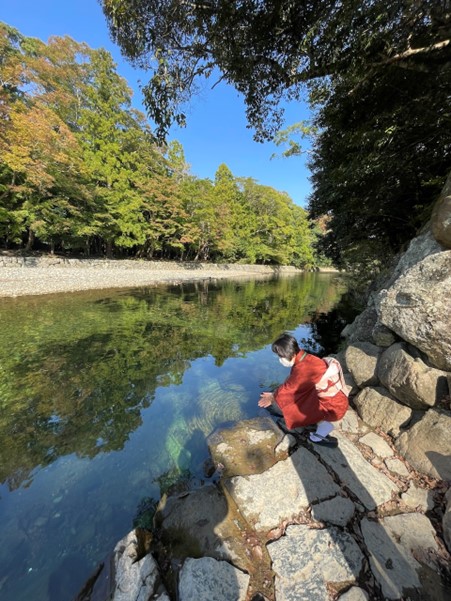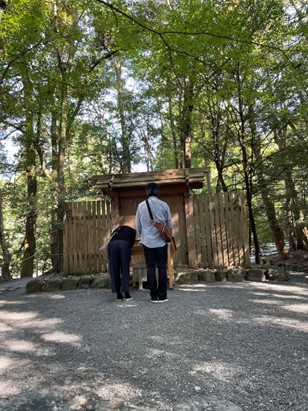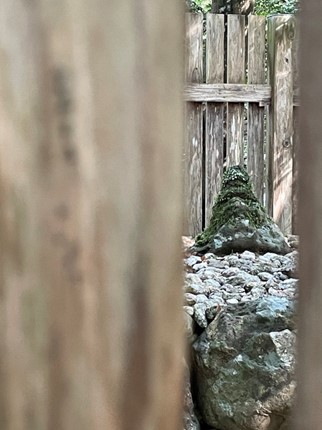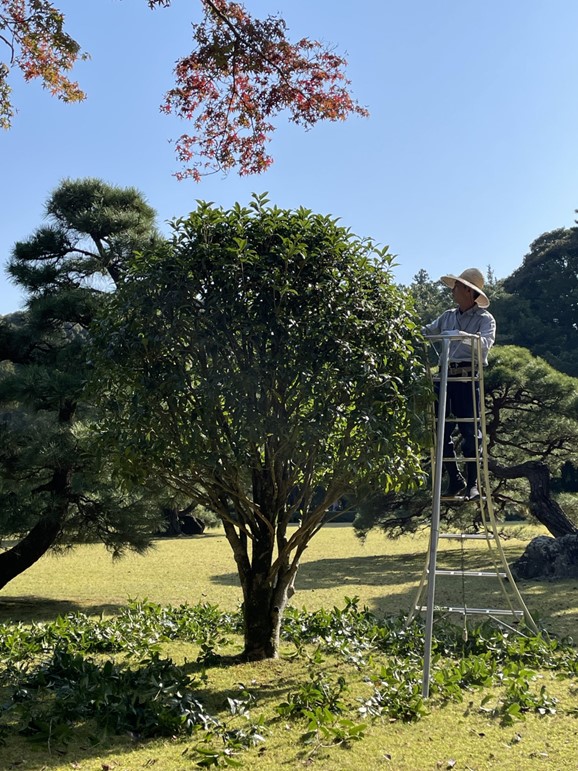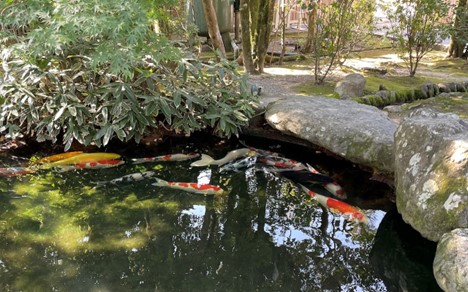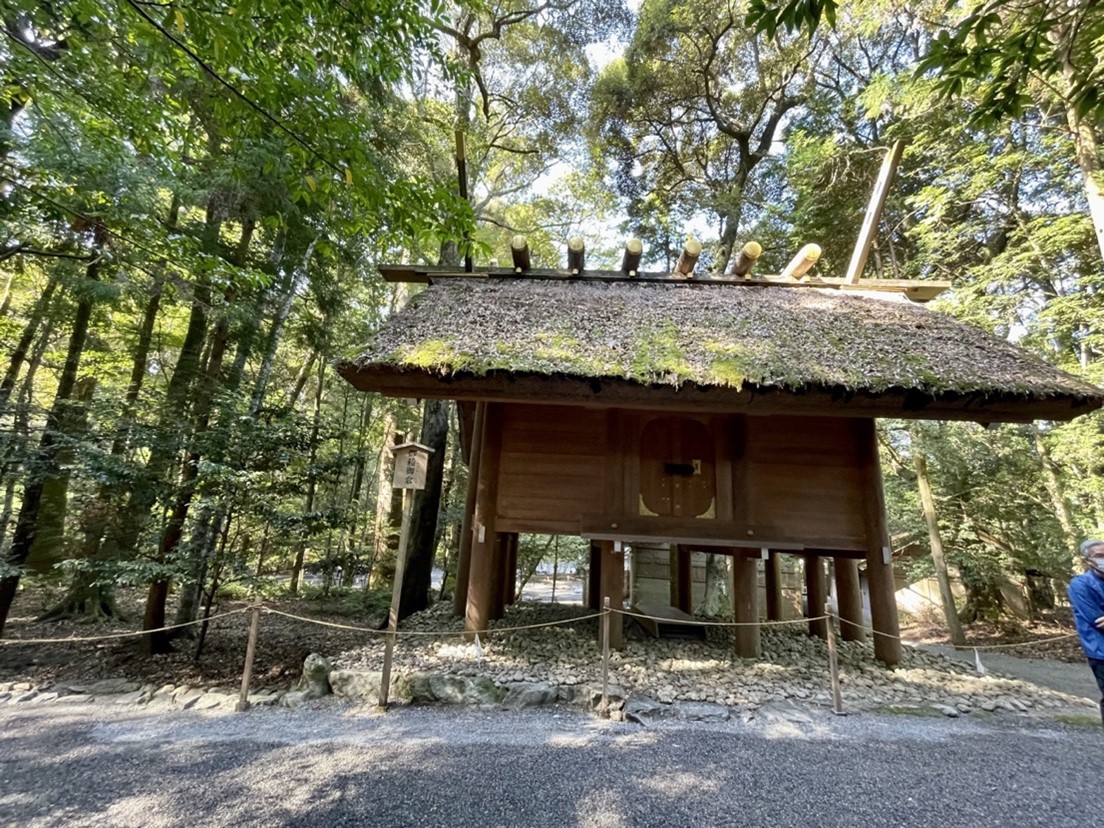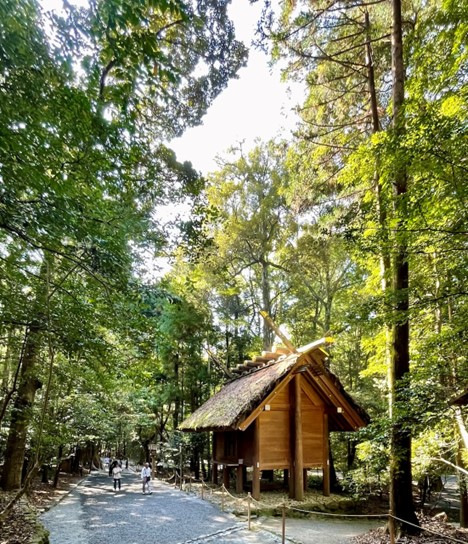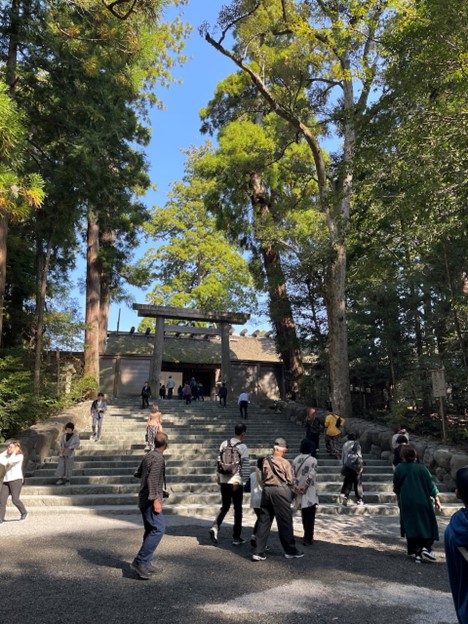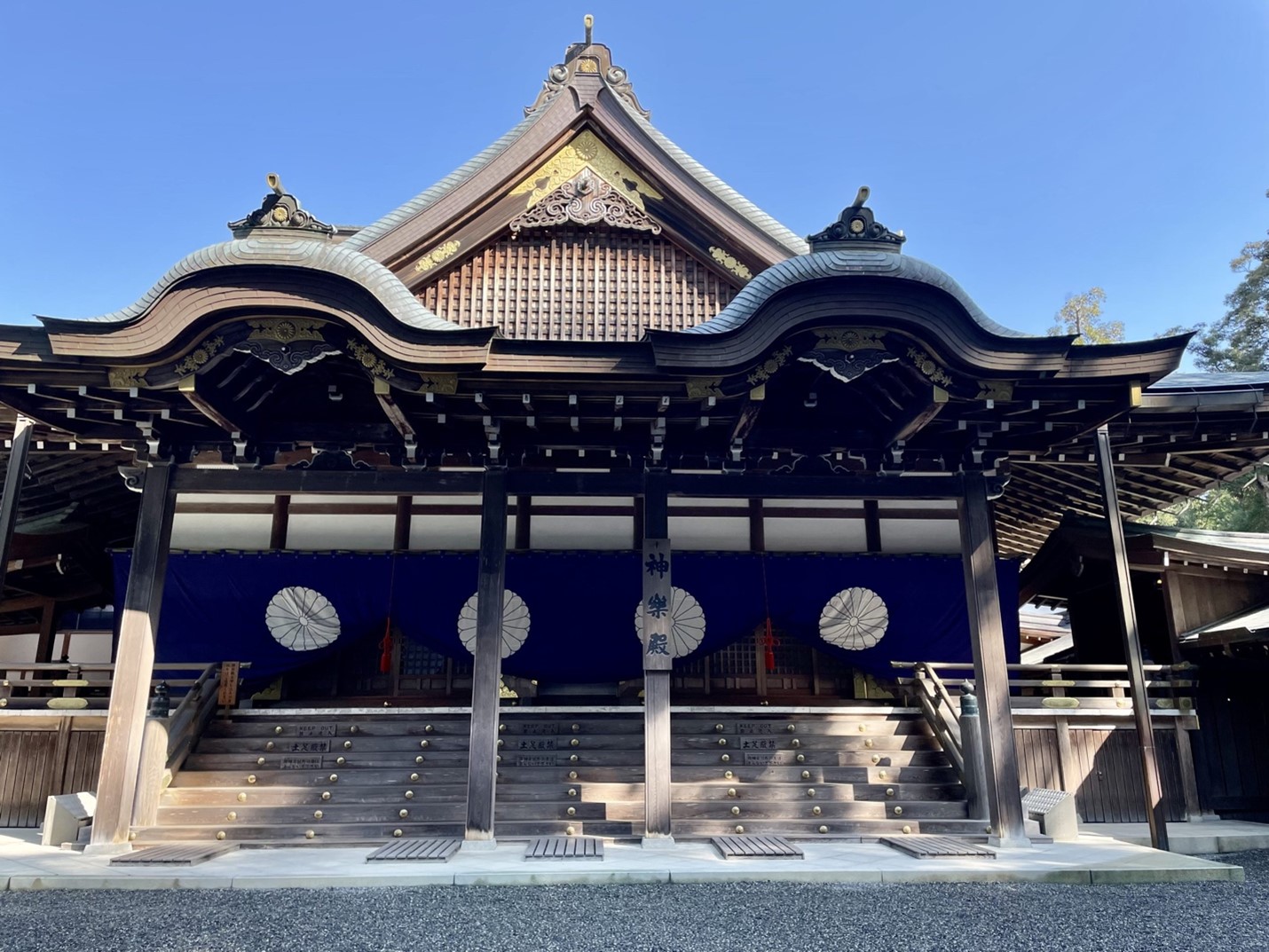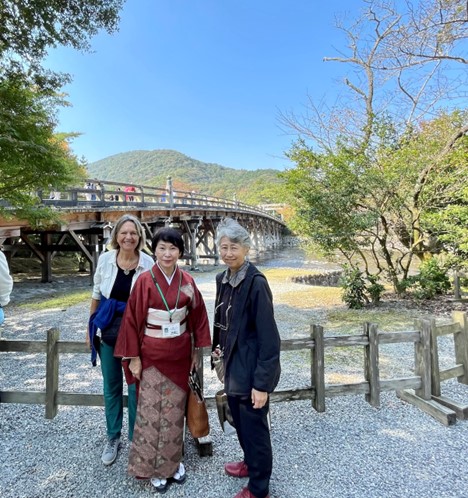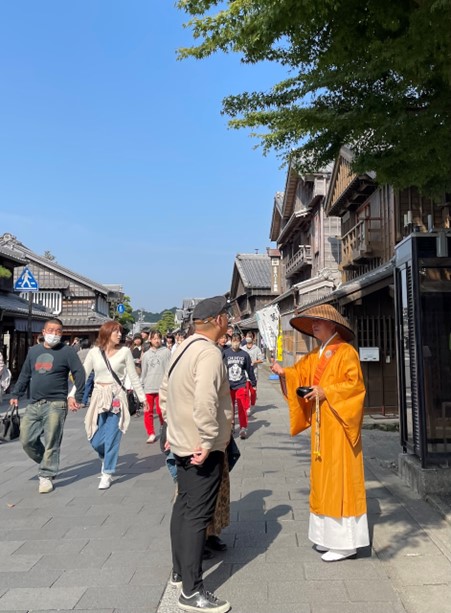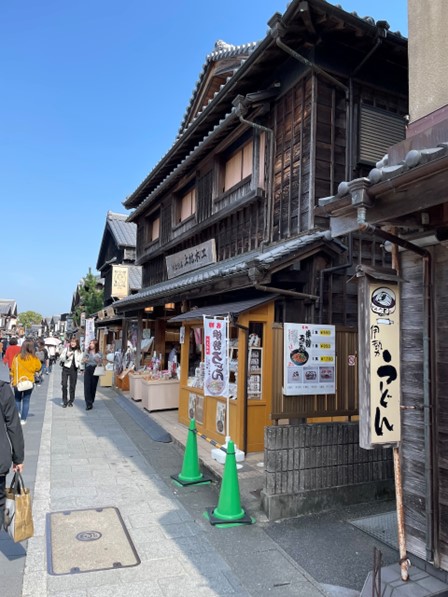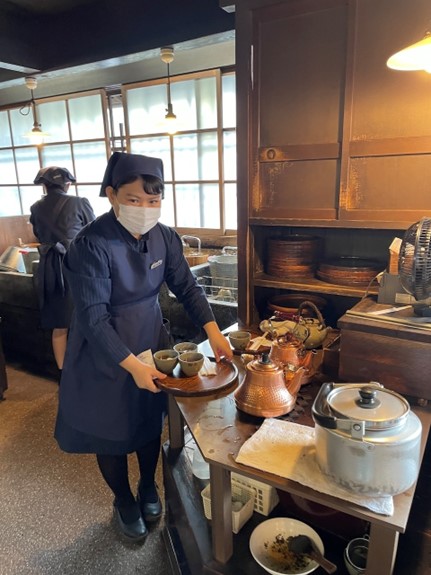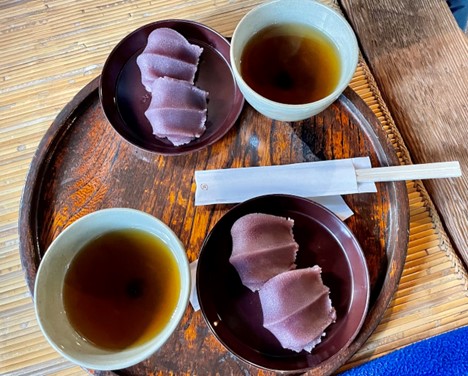.
On the last two days of our stay on the Kii peninsular, we visited the most important shrine of the Shinto tradition – the Ise Grand Shrine called Jingu. With its 2000 year long tradition of continuous worship, it is the oldest pilgrimage place I have ever visited. Jingu consists of two shrines, the Inner Shrine called Naiku and the Outer Shrine with the name of Geku. They are about 5 km apart from each other. For 2000 years, the shrines and a bridge are reconstructed every 20 years, which ensures the same architectural style and construction method since ancient times. Standing in front of the shrines is like being removed from time.
.
.
.
.
.
Entrance to Naiku (Inner Shrine) over the Uji Bridge crossing the Isuzugawa River. Hisako-san, our Japanese tour guide, dressed in a Kimono, stands beside me.
.
.
.
.
On the way to the shrine, we saw a group of joyful men ready to donate rice to the sun goddess Amaterasu.
.
.
.
..
Rice offerings carried to the shrine in a ritualistic way
.
.
.
.
Purification basin at the entrance of the shrine complex
One has to wash hands and mouth as a symbolic act of cleansing body and mind from all unrighteousness, according to the kami-way.
.
.
.
.
.
Our tour guide Hisako-san showed us the more ancient way of purification, washing the hands in the Isuzugawa River.
Naiku is the most sacred place in the Shinto tradition. During the 17th century, 10% of the entire population were pilgrims visiting the Grand shrine. The earthly abode for the sun goddess Amaterasu was chosen by the daughter of the 11th emperor of Japan. She looked for 20 years for a perfect place until the goddess herself, according to the legend, told her that it was beside the river Isuzugawa in Ise where she wanted to live. She placed 50 bells beside the river to mark the area – ever since then, the river is called the 50 bells river.
.
.
.
.
.
Beside the river stands a little shrine dedicated to the secretary of the sun goddess Amaterasu. The secretary is the god of the river. This simple cabin, surrounded by a wooden fence, standing under a canopy of trees beside the calm, flowing river expresses the atmosphere of the entire, huge place – it is nature itself which is sacred. The faith is expressed by connecting to trees, water, rocks, the shrines where the kamis dwell.
.
.
.
.
.
I was peeking through the fence and saw a little moss patched rock. It is this rock, Hisako-san said, where the kami lives.
.
.
.
.
.
The ground was prepared for the Imperial family to arrive sometime in the near future. The emperor is considered the direct descendent of Amaterasu.
.
.
.
,
Peacefully, the Koi are making their rounds in this little pond.
.
.
.
.
.
The shrines are built like ancient rice granaries out of Japanese Cypress.
.
.
.
.
.
On the way up to the inner shrine, we passed three little shrines – one was used to store rice for Amaterasu.
.
.
.
.
.
A simple flight of stairs leads up to the inner shrine. Nobody – except the Imperial family and some Shinto priests – is allowed to enter the sacred place. The sanctuary is surrounded by several fences and the visitor only can get to the outermost fence. Photography is not allowed. Here, prayers to Amaterasu should be thoughts of gratefulness and not contain any wishes, nor should money be donated (according to our guide).
The inner shrine houses three sacred relics, the Imperial Regalia of Japan. The most important relic is the mirror called Yata-no-Kagami, which lured the sun-goddess out of a cave she was hiding in, bringing light back into a dark world. Amaterasu gave the mirror and the other two sacred objects to her grandson, Ninigi-no-mikoto, when he descended to the earth in order to rule Japan. She told him to honor and worship the mirror as her spirit. His great-grandson, Jimmu, became the first human emperor of Japan. This myth established a simple constitution for Japan and is still of value today.
.
.
.
.
.
Kaguraden Hall, where ritual dances are performed. The first dance, legend says, was performed for the goddess Amaterasu in order to lure her out of her cave. A kagura dance is mostly performed for the pleasure of the kami and always accompanied by traditional music.
Very little has been written to help the worshiper understand the nature of the enshrined kami and the meaning of the dances and rituals. Japanese people perform the rituals with a natural ease. The faith has been transmitted from generation to generation and is somehow ingrained in the psyche of Japanese people. One can say that this was a heart to heart transmission. I think that this is the reason that the ancient tradition is still alive in modern Japan.
.
.
.
.
.
Before we left, we made another photo in front of the Uji bridge. Like the shrine, the bridge is also rebuild every 20 years. This work is done by lesser skilled craftsmen who are still learning.
After our visit of the shrine, we went to the hospitality district nearby, Okage Yokocho. As with many buildings reconstructed in the traditional style, it has the flair of old Japan
.
.
.
.
A priest talking with a visitor
.
.
.
An old street
.
.
.
.
.
We went to a traditional restaurant serving hot tea with a rice pastry
.
.
.
.
Delicious tea and sweets
.
.
.

